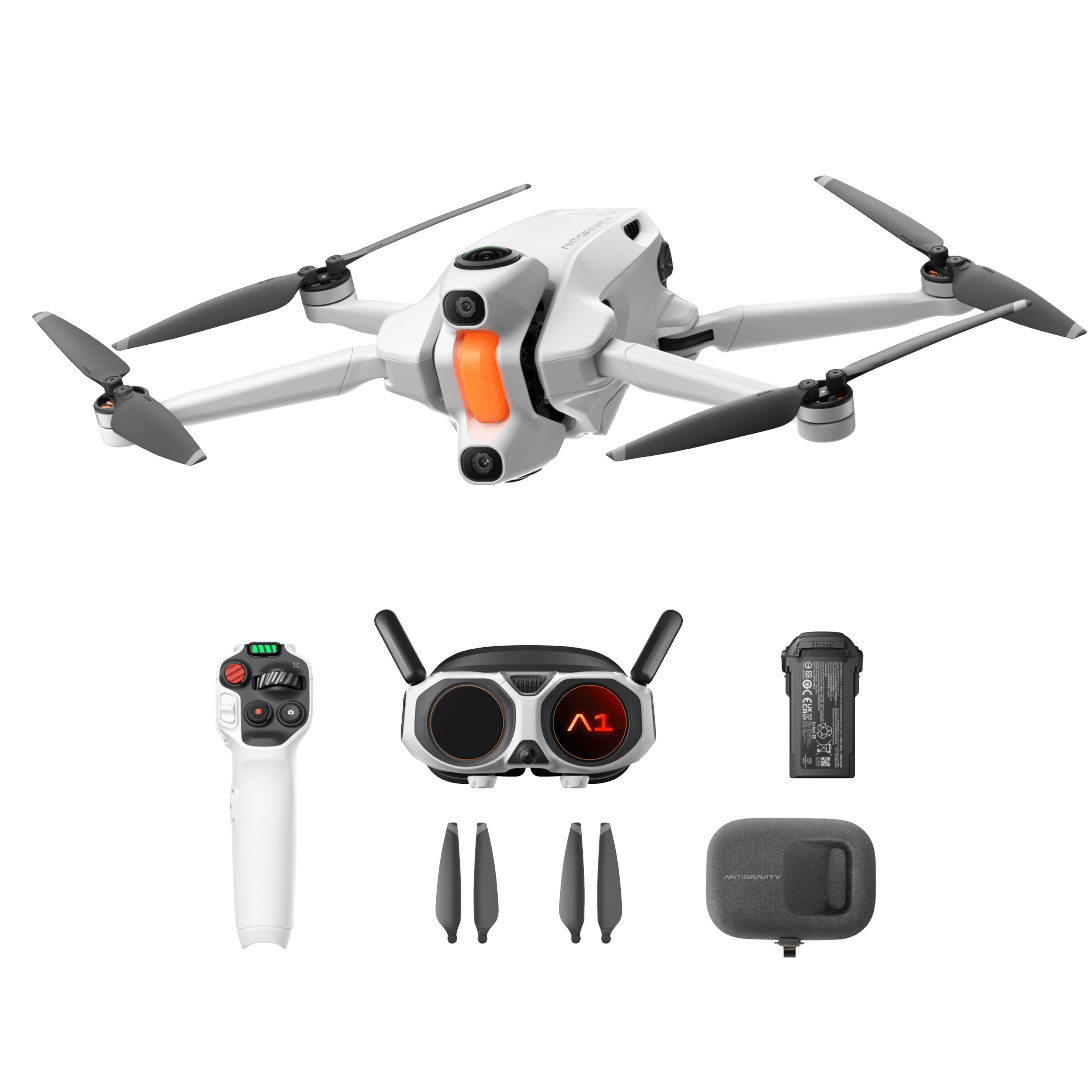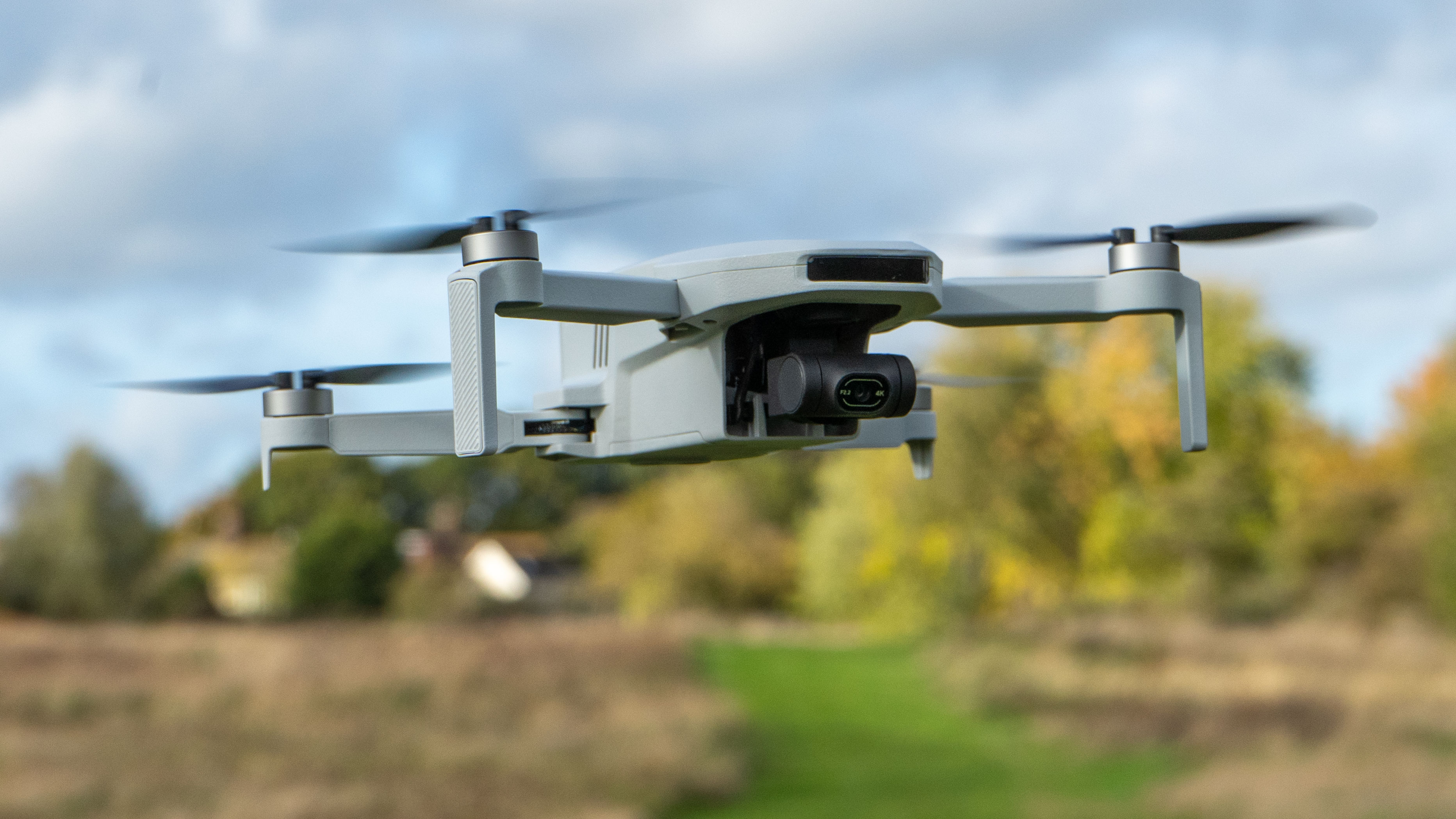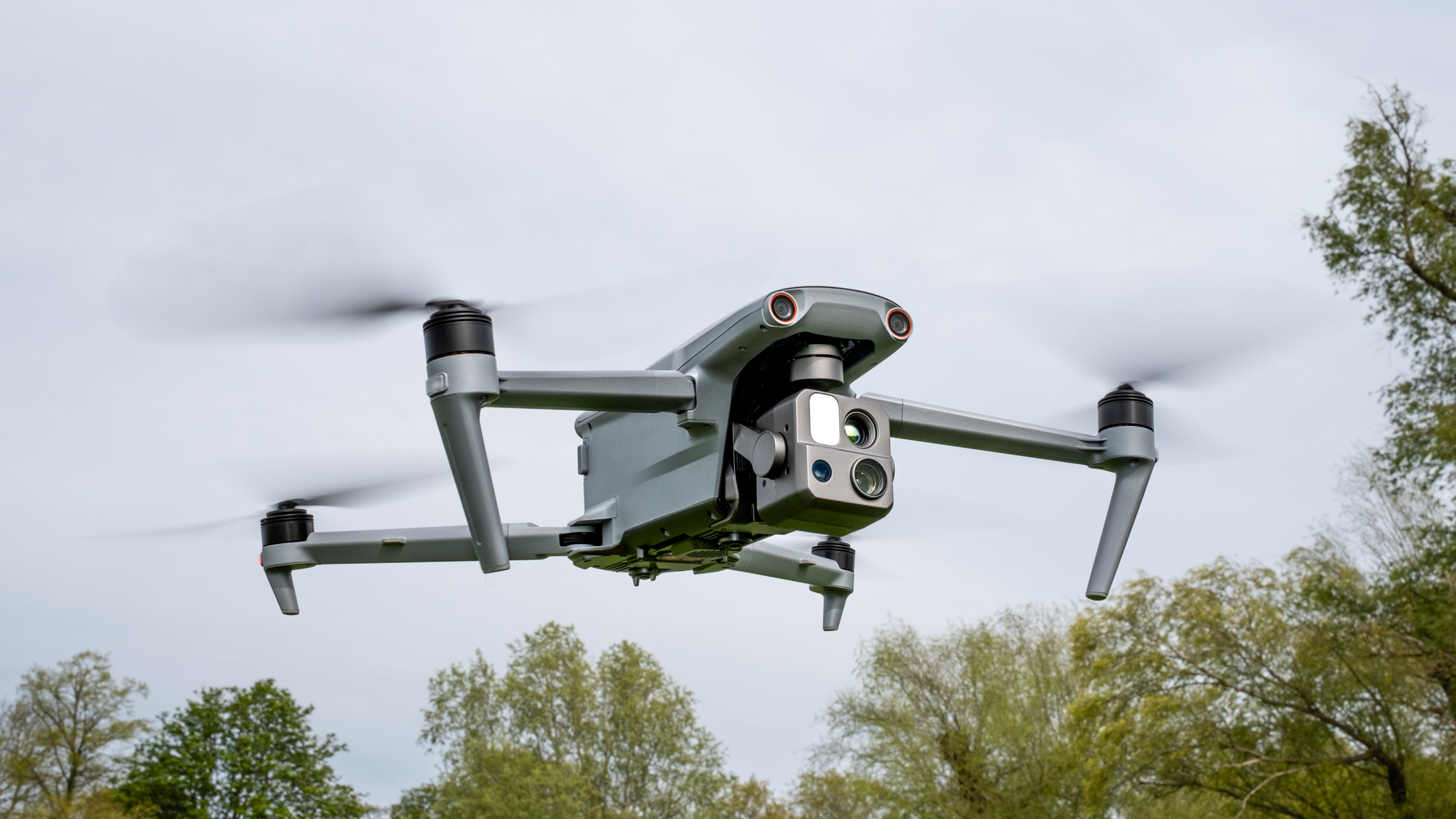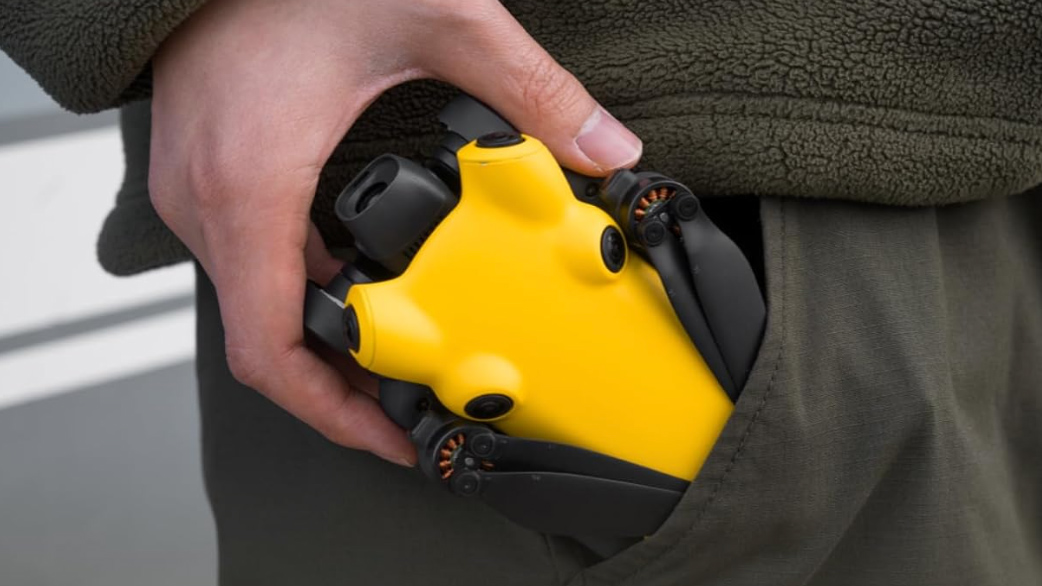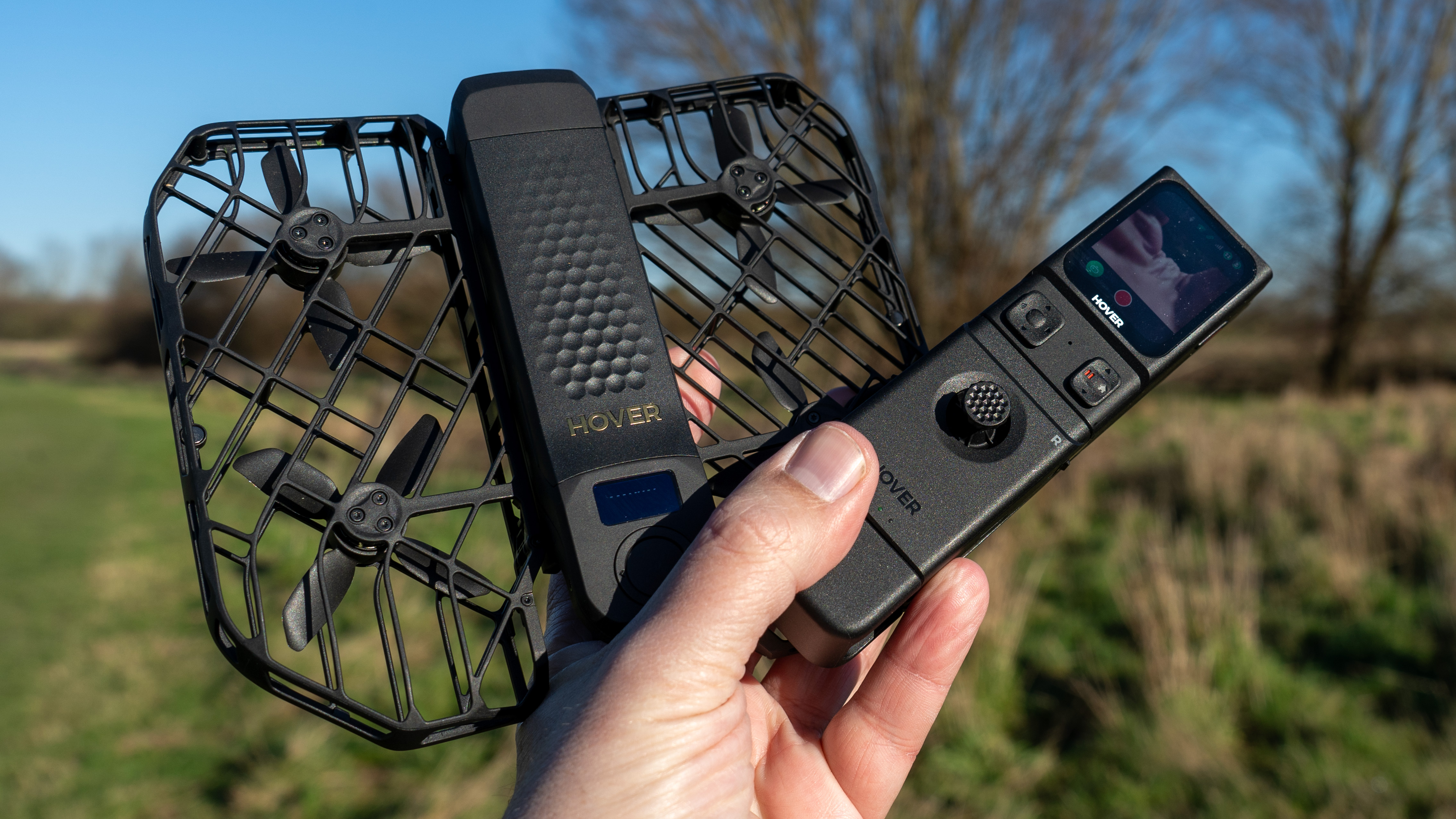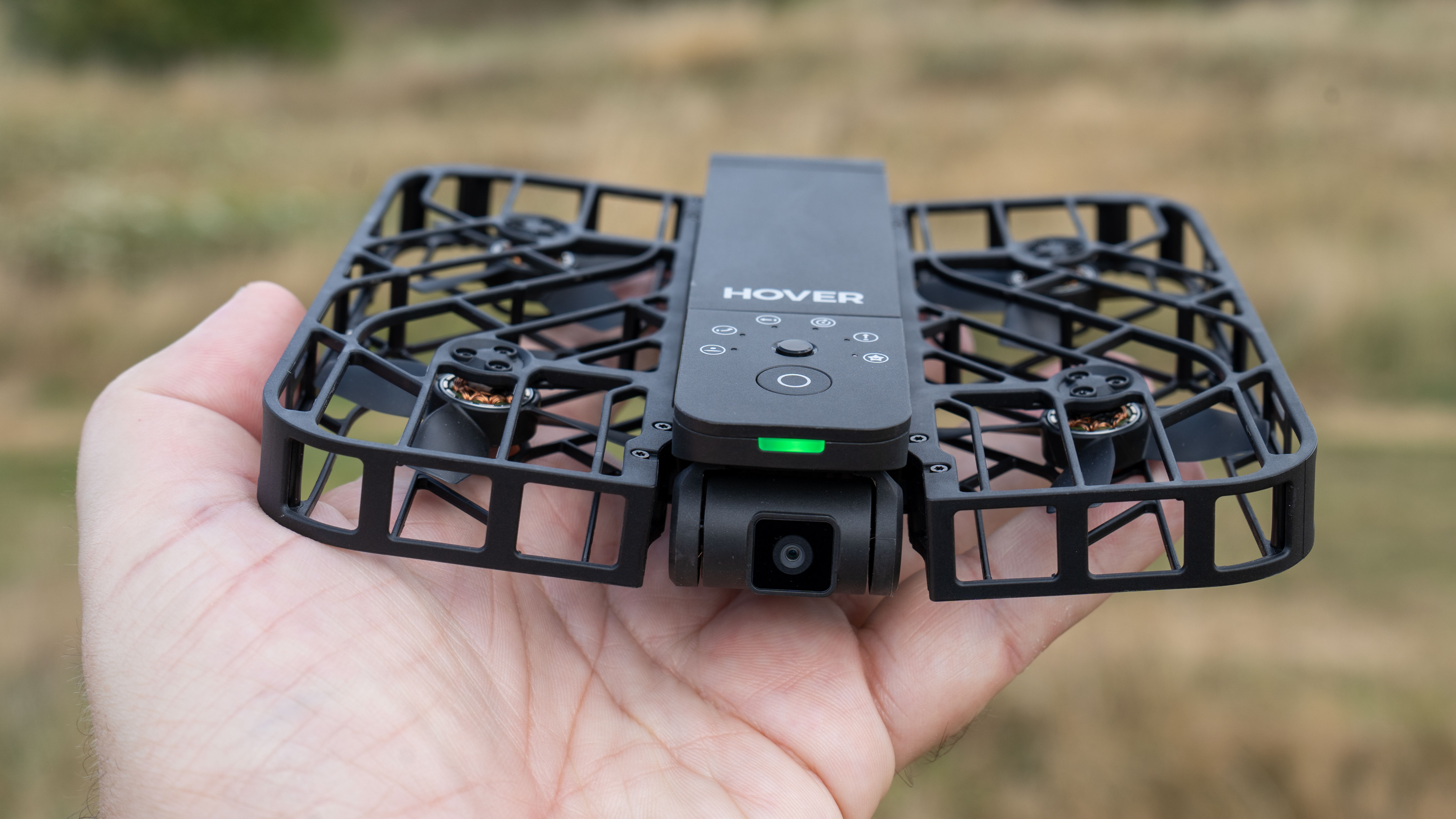If you can't buy a DJI drone, what should you get? Here are the top non-DJI drones I recommend
If you're looking for an alternative to DJI because of rules or laws then here are some options
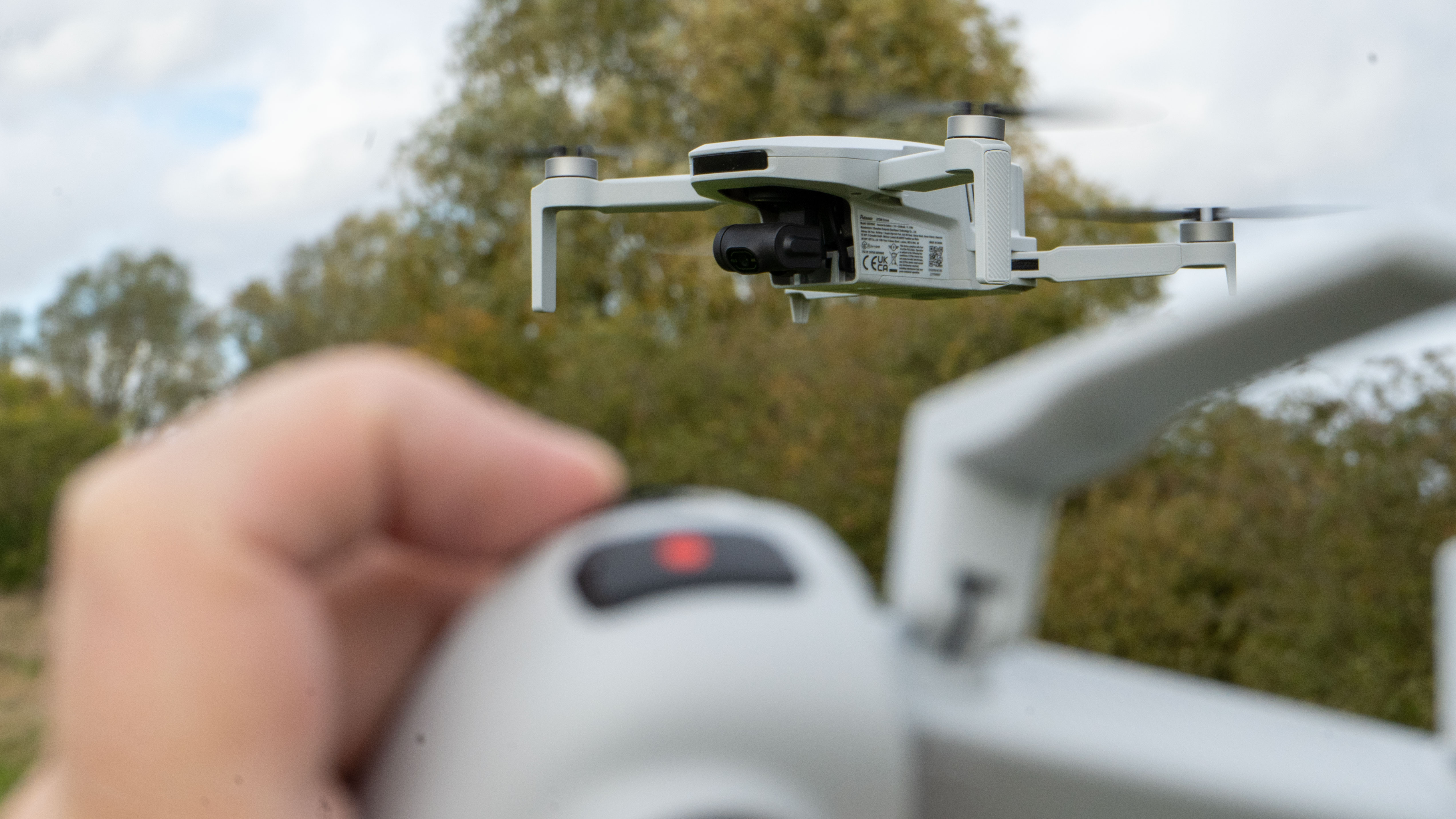
Thanks to legal restrictions on freedom of choice (not to mention tariffs and trade wars), it's sometimes important to look for an alternative to DJI, the world leader in consumer & prosumer drones.
Most of the time, you'd simply look for the best camera drone, the best beginner drone, or best thermal drone out there, but not everyone has that luxury.
Some organizations in America connected to national security are already banned from buying DJI drones simply because they're Chinese. Others cannot choose DJI, and a blanket ban on DJI in America is looking very likely at the end of 2025, with some overzealous customs officers getting started already. (If you're interested in the politics & politicians, read the FAQ below, and I got the chance to have a very open interview with DJI's Head of Policy on this situation)
Fear not, however. There are still some options for most different drone types, especially if you're still prepared to buy Chinese but not DJI. You may have to make some compromises, but you can still get a lot of the features you want – and it's worth knowing there are even some genuinely worthwhile competitors to DJI.
This is a guide to the best alternatives to DJI drones you can buy.
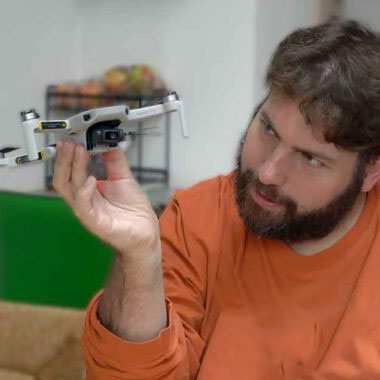
Adam was building drones when DJI was just another company online selling parts like all the other hobby firms in what was a super-niche area. He is our resident expert on drones (but also boasts a law degree). He is the author of several books on the subject including bestsellers The Complete Guide to Drones and The Drone Pilot's Handbook.
Top Picks

Cheap and powerful
The Potensic Atom boasts 4K and a gimbal for stable video, plus a brilliantly designed phone holder/controller, smart software with a full set of features, and elegant accessories.
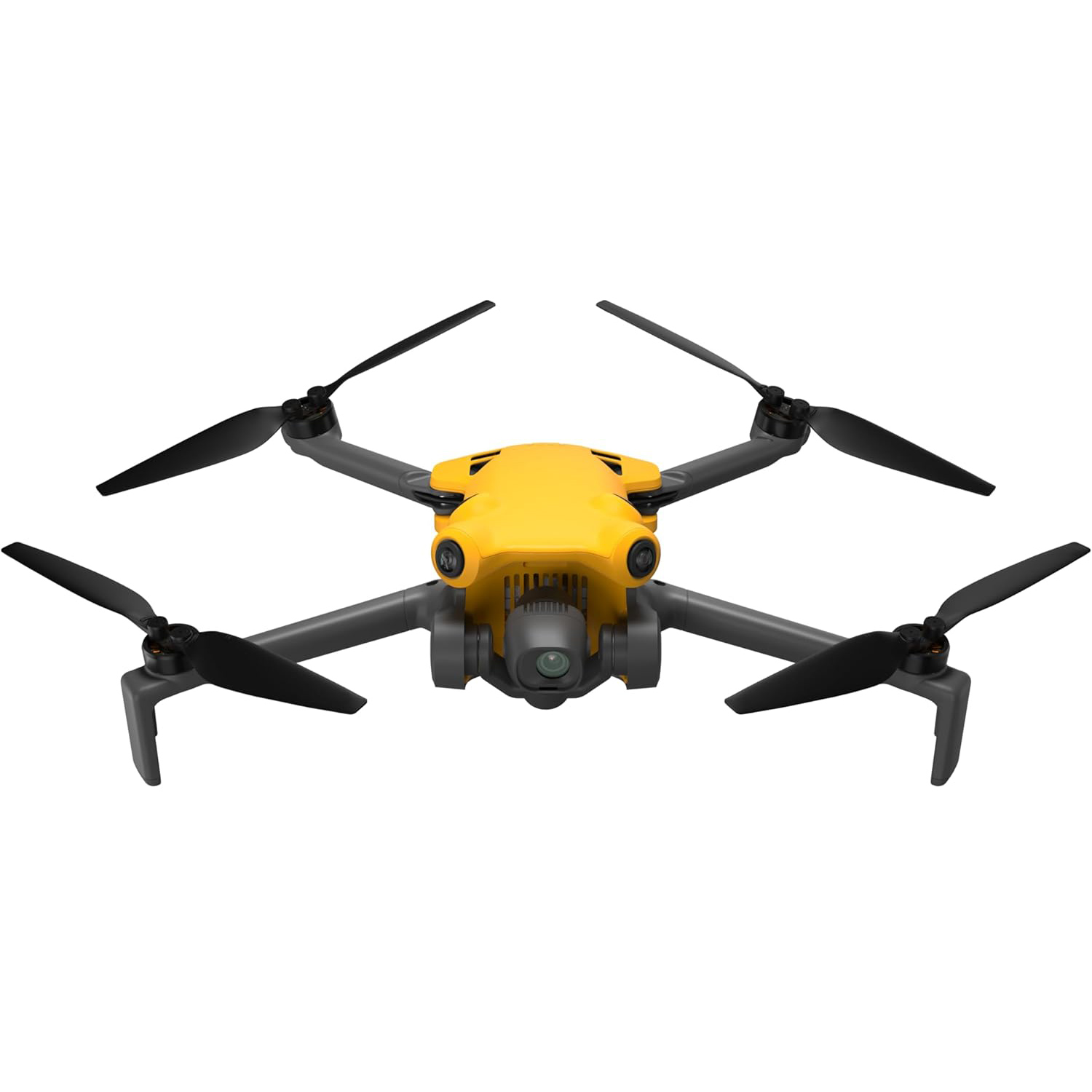
Best light pro
What seems to be a competitor with some almost suspiciously similar specs to the brilliant DJI Mini 4 Pro, this is a drone which looks very different to the Chinese offering, but can match the quality

USA-Legal DJI Clone
If you need something as DJI-like as possible, then Anzu have licensed DJI's tech & apps, but is producing it outside of China so you're legally OK!
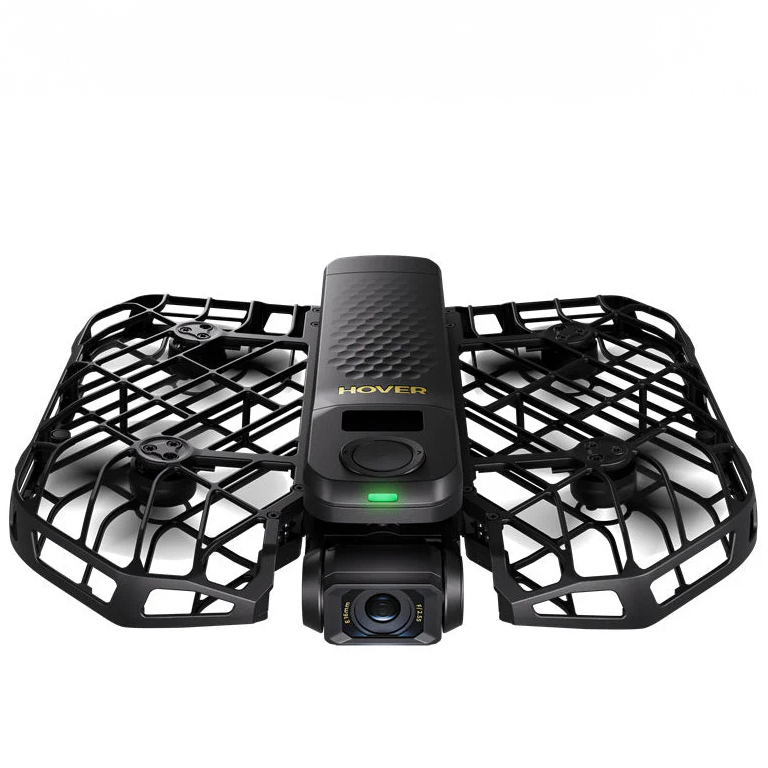
8K camera & follow-me AI
It's smart, it's light, it's safe, and it'll loyally follow you without the effort of flying it or you can use a real controller. Choices and hand-landing goodness in one—genius.
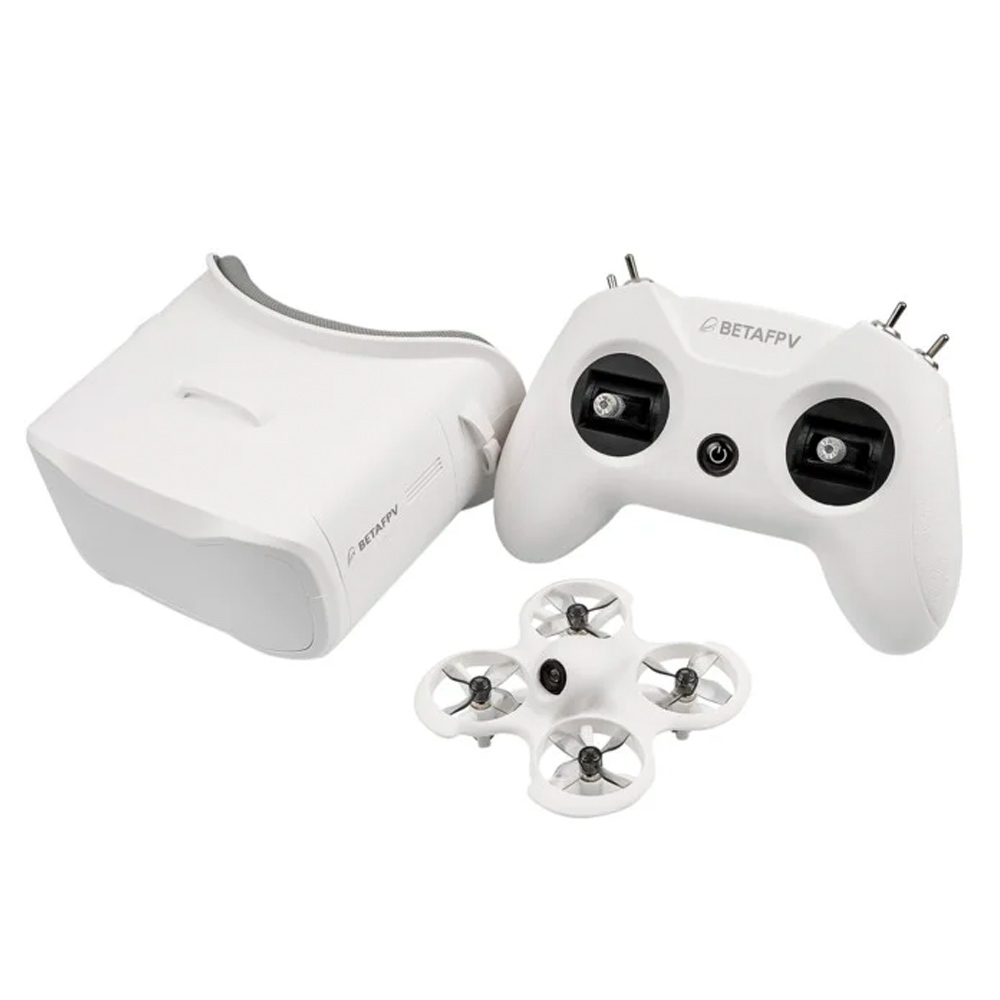
Best all-in-one FPV kit
A kit that gives you what you need to experience and understand FPV, with a few more options than the more child-friendly 'Lite' set. A brilliant start for any FPV novices.
View the full list ⇩

6K creative's camera
Autel's EVO Lite+ should have weight with photographers and videomakers, with an adjustable aperture and a good solid battery life it can get impressive RAW images or high-res video.
Best overall
Specifications
Reasons to buy
Reasons to avoid
✅ 4K stable video on a budget: This isn't a pricey drone but it has a 3-axis gimbal like all good camera drones.
✅ You want a lot of features: The software actually boasts features the market leader doesn't unlock on its budget option like waypoints.
❌ You want to use filters: There isn't an obvious point to fit an ND filter.
Potensic have upped their game with the release of the Atom series – there is this model and the even cheaper Atom SE which lacks the gimbal. Given this is also a good price, I'd much rather have a gimbal and enjoy the advantage of smoother video.
Before this drone there were plenty of Potensic products, but all were concentrated on the 'toy' sector; this has a higher standard of industrial design and could comfortably compete with the DJI equivalent – which I'd see as the Mini 4K. In fact it was probably this drone that forced that company into catch up in terms of delivering 4K.
I'm a massive fan of the controller design, which pulls out and extends, forming a sprung grip around your phone (which serves as a monitor). It feels a bit like a portable video game system in hand, which is a good thing (those things are built to last!). All the components are high-quality too, like the battery charging hub in the Fly More kit which has individual charge indicators.
Potensic is still a Chinese company, but it isn't DJI. They've taken the best inspiration from that company's design– which is no bad thing – but this is their own product, with its own software.
By the way, I also strongly recommend the Potensic Atom 2, which has a similar design but an improved controller and much better range. It does sometimes cost a bit more, though, so I left this edition at the top of the list.
Features ★★★★★ | 4K camera, rich software features including subject tracking |
Design ★★★★☆ | Stylish folding airframe, smart controller, decent app |
Performance ★★★★★ | Sharp video, effective 3-axis gimbal |
Value ★★★★★ | Excellent prices, especially in the fly more kit (and great value compared to the Atom 2) |
Read my full Potensic Atom review (or the cheaper, non-stabliszed Atom SE review)
Best pro
Specifications
Reasons to buy
Reasons to avoid
✅ You are worried about jamming: Anti-interference and anti-jam tech is featured
✅ You do 3D mapping: The 3D mapping mission system is easy-to-use
❌ You don't want to watch 30 minutes of video: There are a lot of features – you need to learn about them
❌ You are on a tight budget: The batteries are charged at a premium price as well as the drone!
Autel don't really play in the consumer space any more (though thankfully for DJI avoiders the EVO Lite is still available). What that does mean is that, unlike a certain other brand, you can be very sure that their newer airframes – like this one – are designed with serious pro and law-enforcement uses in mind.
That Autel also produced consumer drones in larger number before means the software has decent usability, though a lot more features have been piled on now so it's well worth taking a bit of time to get to understand the options – thankfully there is a video course!
My colleague James Abbot did the actual test for the drone, and he certainly noticed that the controller weighed 1361g (48oz) which is pretty high – laptop territory – but you do get a very bright screen which is useful for something capable of mapping missions.
This isn't a drone where photography and cinematography are a huge priority compared to some, but the 50MP JPEGS are definitely to a high standard. The device is built more with mapping and surveying in mind, however.
Autel is also a Chinese company, but isn't DJI, so hasn't been explicitly banned in as many places.
See our full Autel EVO Max 4T review
Features ★★★★★ | There is a lot this drone unlocks once you take a moment to learn |
Design ★★★★☆ | Slightly less elegant than some, the controller is very weighty |
Performance ★★★★★ | This is a responsive and powerful drone, with brilliant control range |
Value ★★★★☆ | The pricing is surprisingly reasonable, especially compared to American-made commercial drones, but the mapping software requires an extra subscription |
Best light pro
3: Skyrover
Our expert review:
Specifications
Reasons to buy
Reasons to avoid
✅ Most powerful drone under 250g: You can fly nearly anywhere, and portability is no problem.
✅ Remotely rotatable camera: Perfect for social and traditional video with the option of portrait.
❌ You need low cost: This drone isn't the cheapest – features like collision sensors add cost.
❌ You want true telephoto: It's great to be able to zoom, but it is digital and beyond 2x the pixels show.
This drone has a lot of similarities with the DJI Mini 4 Pro, though neither company has acknowledged that. It is, nevertheless, no bad thing at all. That drone is spectacularly powerful for its size, and has a host of features that made me, when I reviewed it, wonder if there really was any need for drones heavier than the FAA's 250g / 8.8oz weight restriction any more.
Now, to be clear, this isn't the DJI drone. It's got s distinctly different shell, and if you try and fit DJI's battery in, it'll slide out. Nor will DJI's range of controllers operate it. But 2560 mAh battery is a decent 32 mins, good for the weight category.
That said, the app does look very, very similar – a very good thing, too, as DJI's software is mature and respected, and has high-end features like a flat profile.
All the good stuff is there too, obstacle sensing and avoidance, smart tracking, 25 MB/S fast data transfer, 'pro shots' pre-programmed shots (a little like DJI's QuickShots...), and a Super Night AI Capture mode.
Can we be more sure about this? Not just yet, but it is interesting that so many early customers have been equally impressed, and all said "overall experience is very close to the Mini 4 Pro" which is, after all, the standard by which this class of drones is judge by globally.
Features ★★★★★ | High resolution, 10-bit video, and a camera that can rotate, this is a powerful beast despite the size. |
Design ★★★★★ | A stand out color with a base that makes it visible against the sky, and useful remote and app.. |
Performance ★★★★★ | This is a responsive and powerful drone, with brilliant control range |
Value ★★★★☆ | The pricing is not the cheapest, but it is in competition with serious pro devices despite the compact size. |
Best Tech
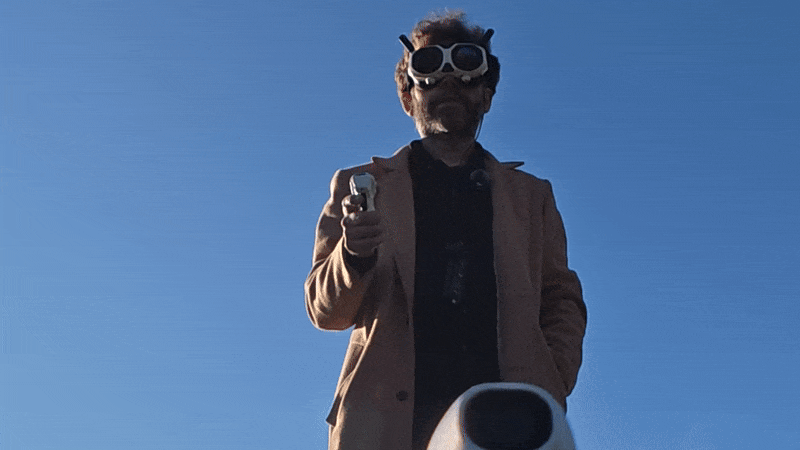
Specifications
Reasons to buy
Reasons to avoid
✅ 360 camera: The only drone with this tech will help your videos stand out, and let you take amazing, precise shots.
✅ You want FPV and simple controls: Antigravity has seriously looked at the best control mechanisms out there, and adapted them to 360 camera systems perfectly.
❌ You want high-res stills: Because of the way 360-degree cameras work, cropping into a particular area of the 8K sphere will harm resolution (read the full review).
A drone that brings together the best of several technologies in one, and still manages to be under the magic 250g weight? It's the sort of thing you might not have even expected the market leader capable of – and you'd be right. An altogether new company has stepped up and created a truly premium drone which allows you to fly it and look in any direction, then later replay the flight on a computer and decide to re-direct the camera wherever you choose – frame by frame if you want – in post production.
The magic technology that enables that is a 360-degree camera, which has not appeared on any previous drone. Antigravity, as a startup, was parented with help from Insta360, the company that has topped my guide to the best 360-degree camera, so it comes with both the right tech and some mature, easy-to-use software to help creators get the best shots from their flights.
Alternatively, you can program a flight path, then let the drone repeat it while you – or someone you know – sits "in" the drone using the FPV goggles and looks around in any direction they choose.
All of this has been achieved not like a first-gen product, but with the aplomb of a premium consumer product. It's not the cheapest, but it has options to compete against a top-notch FPV drone as well as do some things others simply cannot. Well worth a look if your budget can stretch.
See my full review of the Antigravity A1
Features ★★★★★ | From the FPV, waypoint missions and feature-packed goggles, it's hard to dispute the brilliance of this flexible system |
Design ★★★★★ | Clever design keeps weight down while feeling premium and stylish – hard to identify complaints. |
Performance ★★★★ | Flight is good, with only range, speed and (though it's not really fair) resolution being slight quibbles. |
Value ★★★★ | If you understand what you're buying, you'll appreciate the value. Some may not have a need (but all will appreciate the sheer joy). |
Best DJI clone
5. Anzu Robotics Raptor
Specifications
Reasons to buy
Reasons to avoid
✅ Dual camera system: The camera system with dual cameras offers excellent optical quality and up to 56x zoom.
✅ You need a workaround to US laws: All of the DJI build quality with none of the government's restrictions (or links to Chinese databases)
❌ You like the DJI databases: Systems like FlySafe are also missing because Anzu uses Aloft.
Ordinarily, when I assemble a guide to the best drones I need to fly the drone and write a review. This, I think is a bit of a special case – Anzu Robotics are an American company headquartered in Austin, Texas, and selling what looks a lot like, the Mavic 3. Anzu arranges the manufacturing under license in Malaysia and, crucially, the drone has a different name in the FCC database.
I've not tested the dark green Raptor, but I have flown the Mavic 3. What makes the standard Mavic 3 such a brilliant device is that, while still being mote powerful than some telephoto lenses, the entire thing can be stuffed into a kit bag and taken travelling. It is a compact folding drone by the standards of most (bigger than an ultralight, but only around 900g).
It can take off from low grass because its dual camera system is supported. All the key enterprise accessories are also available, or will be soon, like the RTK, speakers, so the drone can be used in search and rescue and other circumstances where the DJI Mavic series have been popular and, in the rest of the world, might still be the logical choice.
The system has a large sensor (4/3rds) camera bolstered by a 12-megapixel zoom camera for closer views (albeit of less exceptional quality). The Raptor is also available in the T variant, similar to the Mavic 3 Thermal.
The drone's hover time is still a very helpful 40 minutes (46 minutes flight time at ideal speed) – this was seen as exceptional when the Mavic 3 first appeared on the scene over a year ago.
Vision sensors (collision avoidance) use up to 200m “sight” to plot the best return to home route. You can check our full DJI Mavic 3 review for more details, though I can't say for sure what aspects of the software might have been removed by Anzu. One many pilots will be pleased not to find included is any form of Geofencing, though (no doubt because a connection to the FlySafe database isn't an option).
Features ★★★★☆ | Multi-lens camera system is good for inspection, and the optional accessories including RTK make the drone a portable powerhouse. |
Design ★★★★☆ | Personally I don't love the green, but the hardware is tried and tested with little to fault it |
Performance ★★★★★ | At his point I can only speak to the cameras in their DJI form; the telephoto could have been sharper but the main camera is stunning |
Value ★★★★★ | The prices are very encouraging, especially compared to many American firms who seem to be taking advantage of the situation somewhat |
Best selfie drone
Specifications
Reasons to buy
Reasons to avoid
✅ You want a consumer drone with a high-end camera: Yes, built on the super-safe selfie drone design, but there is a pretty decent camera here.
✅ You want something the whole family can use: Because it has no-remote AI modes or phone control, it's still as easy to use as the first X1 despite the better camera.
❌ You've got a low budget: If you're jsut looking for a selfie drone, this drone's sibling will get you what you need for a lot less cash
❌ You need to fly long distances: The relatively low range and battery may only slightly curtail creativity, but can feel very limiting if you're used to premium drones.
The HoverAir X1 Pro Max brings a high end camera and recording capabilities – and some noteworthy flying improvements – to the cleveness already set by the HoverAir X1 selfie drone. There is also a HoverAi X1 Pro as an 'inbetween option'.
Essentially this drone steps in as the best consumer camera choice there is if you can't buy DJI, offering something that DJI won't sell for this kind of money – 8K video. Even if that isn't really necessacary, it's still a good camera.
Moreover the option of buying a real controller system means you can take control of the drone in a more serious way. It's not a perfect solution because the radio range isn't ideal and the beacon/controller bundle – though clever (as my full review explains) has some design quirks which make it very pocktable but a little odd compared to the traditional design.
Still, for the oddities, you also get the easy to use hand-launch capabilites of the X1 so you're alos getting a safe, easily flown family friendly drone which the kids can enjoy too.
Read my full HoverAir X1 Pro Max review and see video samples
Features ★★★★★ | A massive range of features, only extended by the 'beacon/controller' option. |
Design ★★★★★ | A little more weight compared to the X1 gives the drone a longer life, but the folding cage is still brilliant |
Performance ★★★★☆ | AI tracking is even better, but sometimes camera movement could be smoother |
Value ★★★★☆ | In my main review, I gave the drone only 3 stars, but if you rule DJI prices go up. In that context this isn't so bad. |
Best FPV Drone
Specifications
Reasons to buy
Reasons to avoid
✅ You want to learn FPV: Learning to fly in 'first person' is easier with a kit that works together like this
✅ You're looking for something fun: FPV is fun!
❌ You want smooth video: This tiny drone won't hoist an action camera.
The Cetus is a small drone with the relatively unusual addition of an optical flow sensor. Not only does this offer drift-free hover, but a gentle automatic landing when the battery is failing – both huge boons for beginners.
First-time pilots can work their way up through three modes, including a full traditional FPV style. The same applies to the tech; the goggles and controller are of the same kind you can use with other real RF drones.
The controller, in fact, has an especially pleasing feel for ‘noobs’, with real RC-controller sticks surrounded by a more game-like housing. Indeed it can be used as a USB joystick when connected to drone simulators. It’s a shame that this is a live-view experience only – you’ll need to invest in pricier goggles for a record option – but this package is more about fun.
Read our full review of the Cetus FPV kit.
Features ★★★★☆ | Features aren't important here – simplicity is – but the flight modes are helpful and you can record video with the goggles |
Design ★★★★☆ | This is a versatile frame which can cope with a lot of bump, and the game like controller is appreciated |
Performance ★★★★☆ | As micro-whoops go, it's quick and responsive |
Value ★★★★☆ | All you need with far less investment than many hobbyists have made. What's to complain about? |
Best for photographers

Specifications
Reasons to buy
Reasons to avoid
✅ You want aperture control: So many drones have fixed aperture, including the DJI Air 3, so the ƒ/2.8-ƒ/11 aperture offers a point of difference.
✅ You want high-res video: Some editors prefer to crop down, and the EVO Lite+ gives you options.
❌ You want all-round collision sensors: They're not on the sides or top, but they're handy where they are.
❌ You want to fly all day without charging the controller: They battery life isn't great.
The EVO Lite+ made our list of best drones on its own merits, even where customers were allowed to consider DJI. It took the middle-weight folding drone and approached it a bit differently and I really liked that, especially as Autel seemed to be priortising the thinking of photographers and videographers.
Despite the name, the EVO Lite+ is not Autel's most lightweight offering – that is the Nano, which is their contender against the DJI Mini 3. It's better thought of as a smaller version of their EVO series. It's a little older than at is 2022 launch, so some of the tech isn't as modern as you'd hope for – the subject tracking isn't as sophisticated as on more modern drones – but this remains a very powerful aircraft.
There are actually two versions – the EVO Lite and Lite+ – with different cameras. The both have the same firm-feeling airframe, available in a choice of colors (including Autel's famous workmanlike orange). There are reassuringly sprung arms that make quick setup in the field a breeze. The standard controller seems very console-inspired, but that wasn't actually an issue for me, instead makes it comfortable. The battery life was more questionable though.
I like to think of this as a drone for folk who believe a little more in specs than digital solutions. The new DJI Air 3 dropped a 1-inch sensor, but this drone (at least for the Lite+ edition) stuck with the idea, with lovely big 2.4um pixels, and 5.4K video which can be useful. The camera's 29mm EFL lens is a matter of taste; not as wide an angle as most drone cameras.
It is a shame no 10-bit video is offered – just a flat profile for filmmaking – and the subject following is limited, but low-light performance is excellent and I love the fact I can tweak all the settings.
Features ★★★★☆ | Good resolution, though lacks the dual-camera system of the Air 3 |
Design ★★★★☆ | Not 'light' but easy to travel with |
Performance ★★★★★ | Decent battery, impressive camera and night modes |
Value ★★★★☆ | The price is very appealing if you want creative control |
Read my full Autel EVO Lite+ review with video samples
Cheap selfie drone
Specifications
Reasons to buy
Reasons to avoid
✅ You want a drone that can fly itself: The HoverAir X1 is designed to follow you using AI, and it do so very well – brilliantly, in fact, considering it's all done with the main camera.
✅ You're looking for something fun: The genius of the X1 is how safe it is and how little effort it is to fly; even a phone as controller is optional.
❌ You're expecting a high workload: The drone can only record to its in-built 32Gb storage; no memory cards.
❌ You want 4K video: The drone maxes out at 2.7K, more than good enough for sharing but perhaps not exactly broadcast quality.
This might not be ideal for younger kids without a bit of parental supervision, and it's certainly not the cheapest toy, but it's not too pricey either compared to many on this list and it does offer a very different take on drones that I found very compelling. It's one I've added to my collection, and it's one I find the whole family can enjoy (my son loves it and is able to use it age 8).
When I first tried it, this drone surprised me with its sensibly safe design, and by how the AI could simply follow me, taking off and landing on my own hand. After initial set up, I didn't even need my phone to do it – there is a combination of a speaker inside so voices reassure you that you've asked for the right thing and simple buttons on the frame.
Think of it as an angel on your shoulder which can be passed between family members and follow them running, cycling, or undertaking any activity. An unusal drone, but amazing. It no longer offers the best specs thanks to HoverAir's own newer model's, but that does mean you can find it for relatively pleasing prices.
Choosing this drone does involve making a slight compromise when it comes to flight time and range; you can choose to fly it with your phone (wi-fi range) or just let the drone do the flying, but the resolution and flight time doesn't match even most ultralights. That said, it's not only cheaper and smarter but the caged propellors are notably safer than other drones.
Read my full HoverAir X1 review and see video samples
Features ★★★★★ | Subject tracking and remote-less operation |
Design ★★★★★ | Ultra-light folding cage |
Performance ★★★★☆ | AI tracking great, though battery could be longer |
Value ★★★★☆ | In comparison to the X1 Pro Max, this is cheaper |
Best Mini DJI Clone
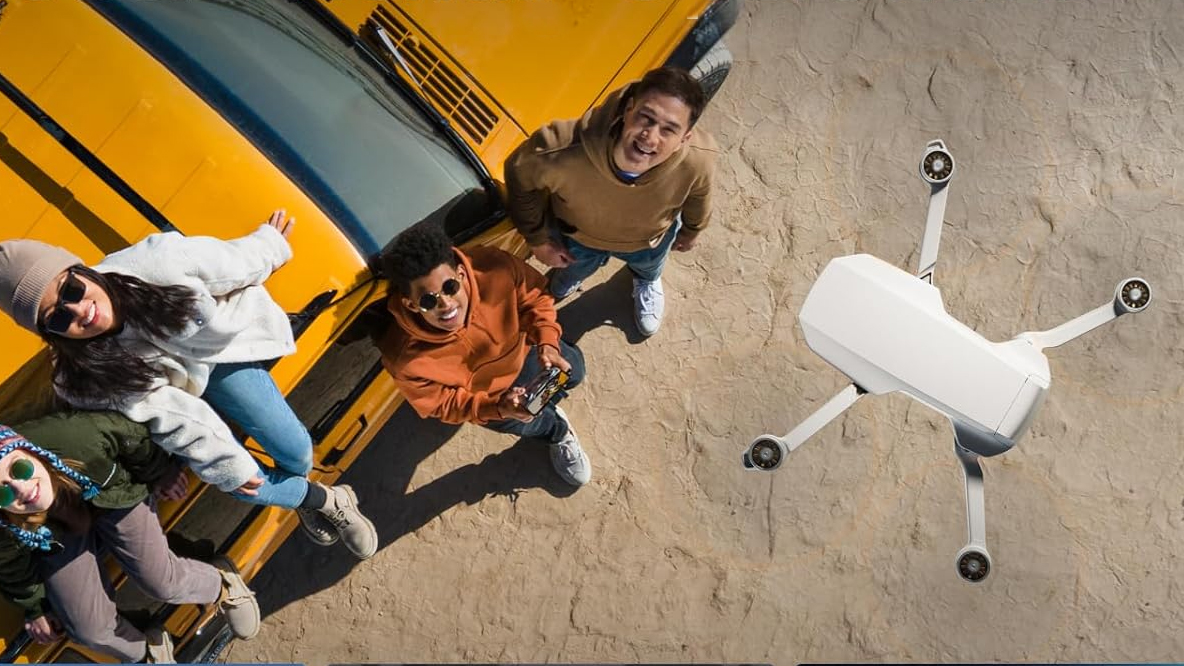
10. Specta Mini
Our expert review:
Specifications
Reasons to buy
Reasons to avoid
✅ You want a beginner's drone: All the key features a beginner needs – GPS retun to home etc. – and a good camera with a gimbal.
✅ You want reliability: This is proven tech, admittedly by, ahem, another brand, but hey, that's the government's problem!
❌ You want collision sensors: It doesn't have any!
❌ You want a telephoto: There isn't a lot of quality in digital zoom.
This drone is, in essence, the DJI Mini 4K. Reportedly it even comes off the same production line (which is – worry not if this matters to you – Malaysian, not Chinese). The dimensions are spot on, though the firmware is different, so you won't actually be able to use DJI's batteries, even though they fit perfectly.
In terms of drone design, it's excellent news to have this as an option if you can't operate a DJI craft for some reason. The similar pricing and matching design to DJI's entry-level photography drone is great because the Mini 4K is an excellent value drone, and the result of several years of refinement – hardware and software – to the ultralight category which, of course, is under the weight limit for registration.
Flying the drone is easy, it is fast and responsive. The 4K video is good and the camera is generally impressive; you'll find some issues if you have too much dynamic range, so it's best to keep the sun behind you, and it doesn't love low light, but that's far from unique to this drone. The radio range and reliability is much better than many in this price range.
Some will be pleased to hear that Specta have not applied geofencing to some of the drones they're sending out (DJI don't seem to do this any more either – I don't know if this is related).
Read more about this drone in my Specta Mini news piece.
Features ★★★★☆ | Cut down compared to premium DJI drones, you still get some automated orbit features and all the key features, plus panorama images, RAW files etc. |
Design ★★★★☆ | This is a classic design which might not be innovative any more but is very reliable. |
Performance ★★★★★ | Quick and responsive in the air, surprisingly wind-resistant given the low weight, and a good image in decent light. |
Value ★★★★★ | It's hard to argue with the value here, especially as the tech is high end and proven. |
How we test drones
The only way to test drones is by flying them and taking pictures and videos with the camera, so that's exactly what we do! Because different drones have different roles, and different expectations (FPV drones are expected to be more acrobatic, for example) there is an element of judgement and experience involved. We test drones in a variety of wind and lighting conditions to be sure about the cameras.
I personally have been flying drones for well over a decade, and have racked up flight time working for international broadcast clients as well as flying as a hobby. I also enjoy flying drones with my son – who always shares his thoughts and wisdom on all drones which mgiht be suitable for the whole family, giving us a much broader perspective than most reviewers!
FAQ
Why are there bans on DJI drones?
In short, there isn't any proof suggesting DJI poses a security threat to the United States. Nevertheless, plenty of politicians have used the relatively niche area as an opportunity to demonstrate their strength against China.
A good example is the story of the state ban in Florida – that and the events which threaten a national ban on DJI.
Will DJI drones be banned in the USA in 2026?
At the moment the US government passes a law saying that no new DJI drones – or products of any kind, including cameras, would be approved after January 1 2026 unless a security review had taken place into DJI and found the company acceptable.
In other words, if the US government does nothing to help DJI by holding the review, even though there is no real reason to think there is a security issue, DJI goes on a list of "Chinese military companies" and the ban will come into effect in the USA.
Not very fair for DJI, or the company's customers in the USA. DJI drones will still be available in the rest of the world where free trade remains unaffected. The company's existing products will apparently be unaffected at first too – the company's policy director Adam Welsh told me in an exclusive interview.
At the moment, it is late 2025 and no review seems planned, so this seems the most likely outcome, meaning you either snap up the best DJI drone now, or use this list to plan for one of the alternative brands.
Is everyone in America banned from DJI drones?
No. At the moment, though the lower house – the House of Representatives – has successfully tacked an amendment to a bill which would effectively ban DJI products – and passed it, it still needs to go to committee and be voted on by the Senate.
However, there is already a ban on organizations working for the government using DJI.
The best camera deals, reviews, product advice, and unmissable photography news, direct to your inbox!

With over 20 years of expertise as a tech journalist, Adam brings a wealth of knowledge across a vast number of product categories, including timelapse cameras, home security cameras, NVR cameras, photography books, webcams, 3D printers and 3D scanners, borescopes, radar detectors… and, above all, drones.
Adam is our resident expert on all aspects of camera drones and drone photography, from buying guides on the best choices for aerial photographers of all ability levels to the latest rules and regulations on piloting drones.
He is the author of a number of books including The Complete Guide to Drones, The Smart Smart Home Handbook, 101 Tips for DSLR Video and The Drone Pilot's Handbook.

